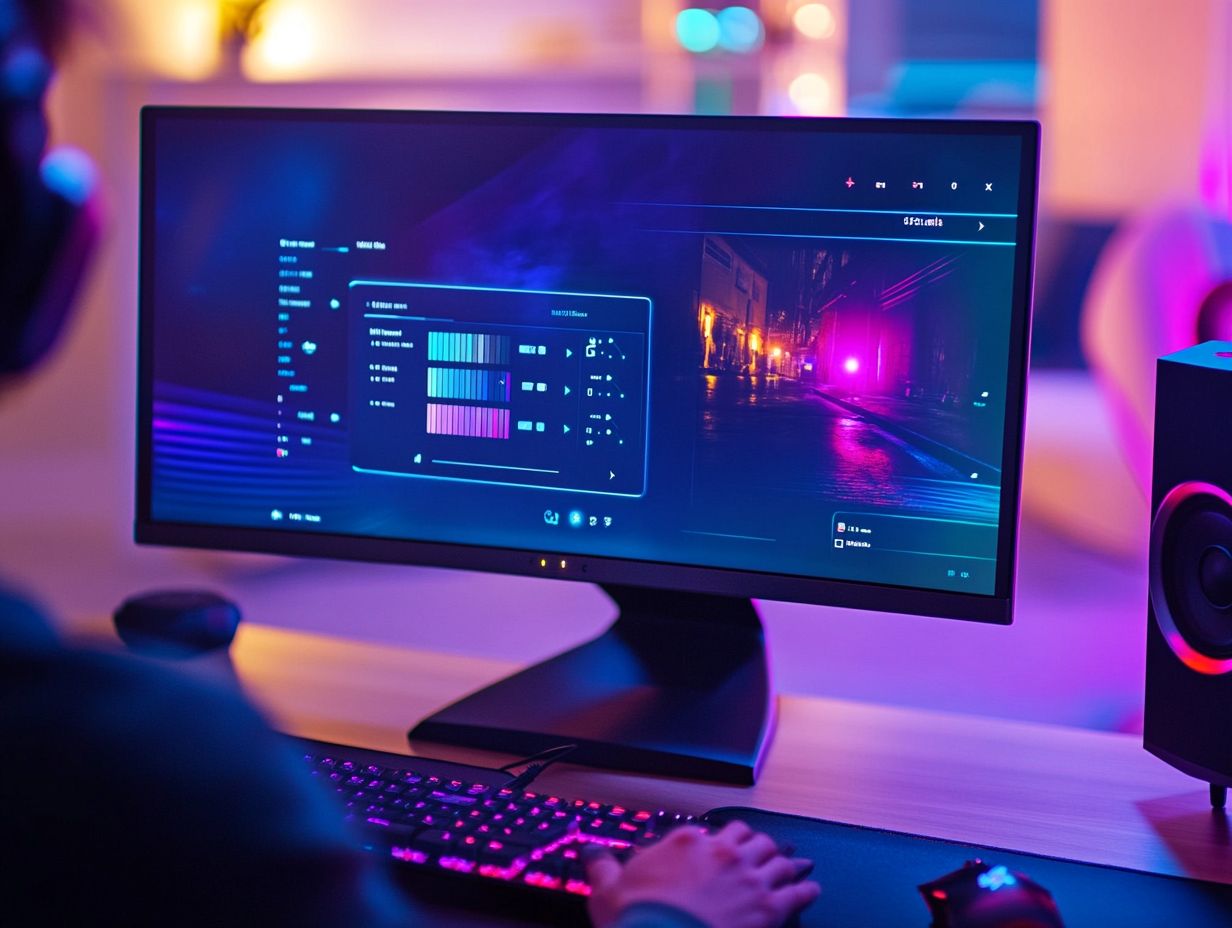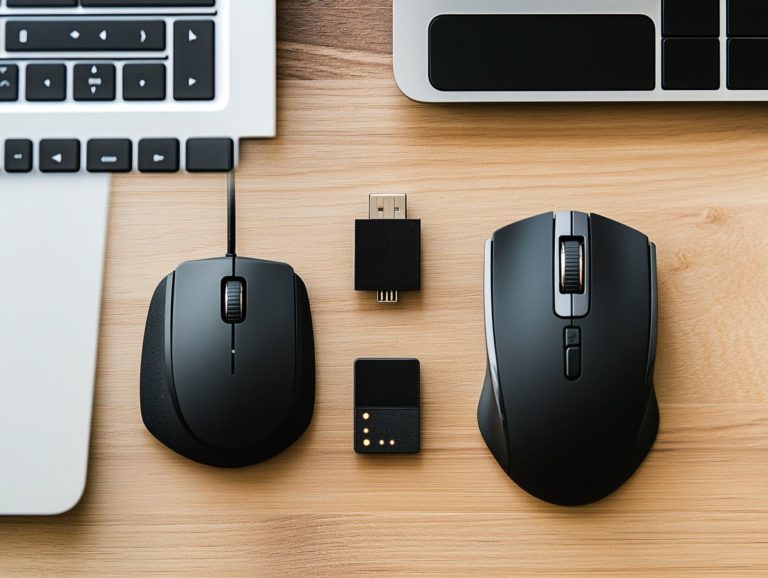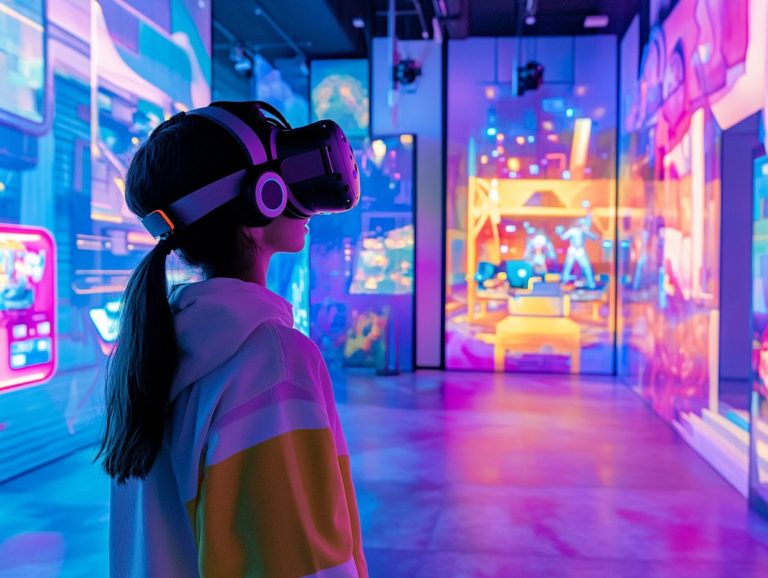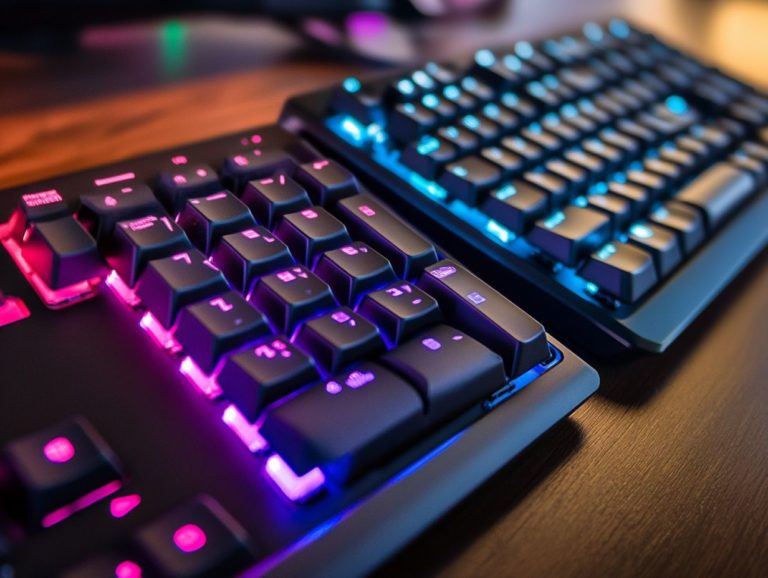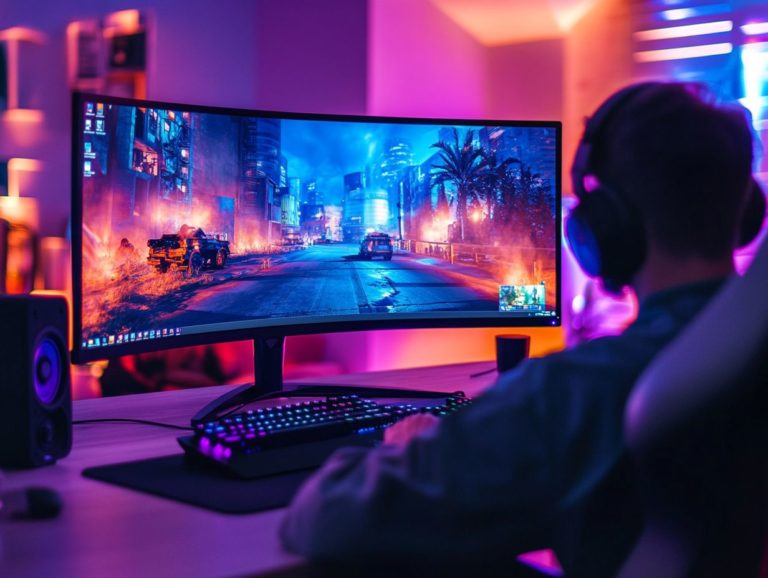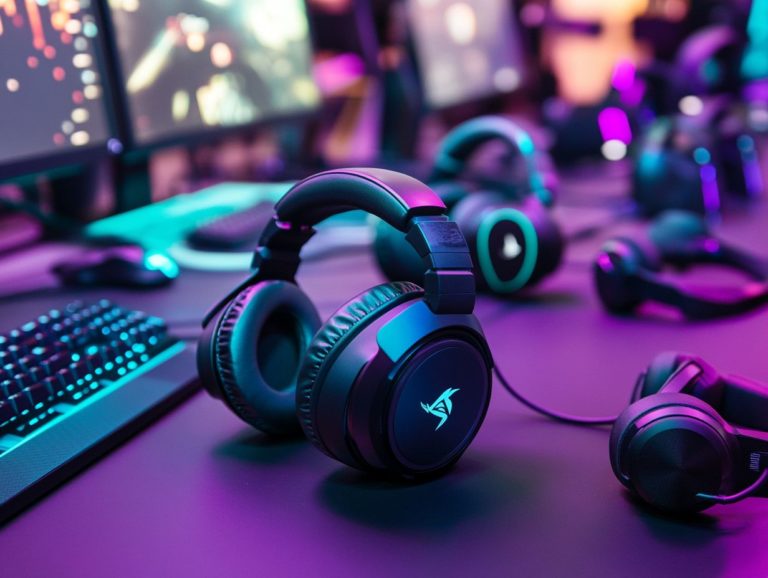how to optimize your gaming monitor settings?
In the realm of gaming, the right equipment can truly transform your experience. One vital aspect that often flies under the radar is your gaming monitor settings.
When you optimize these settings, you unlock a world of smoother gameplay and sharper visuals. This creates an immersive experience that can elevate your performance.
This guide covers essential adjustments. You’ll learn about resolution, refresh rate, color, and brightness.
Prepare to elevate your gaming experience like never before!
Contents
Key Takeaways:
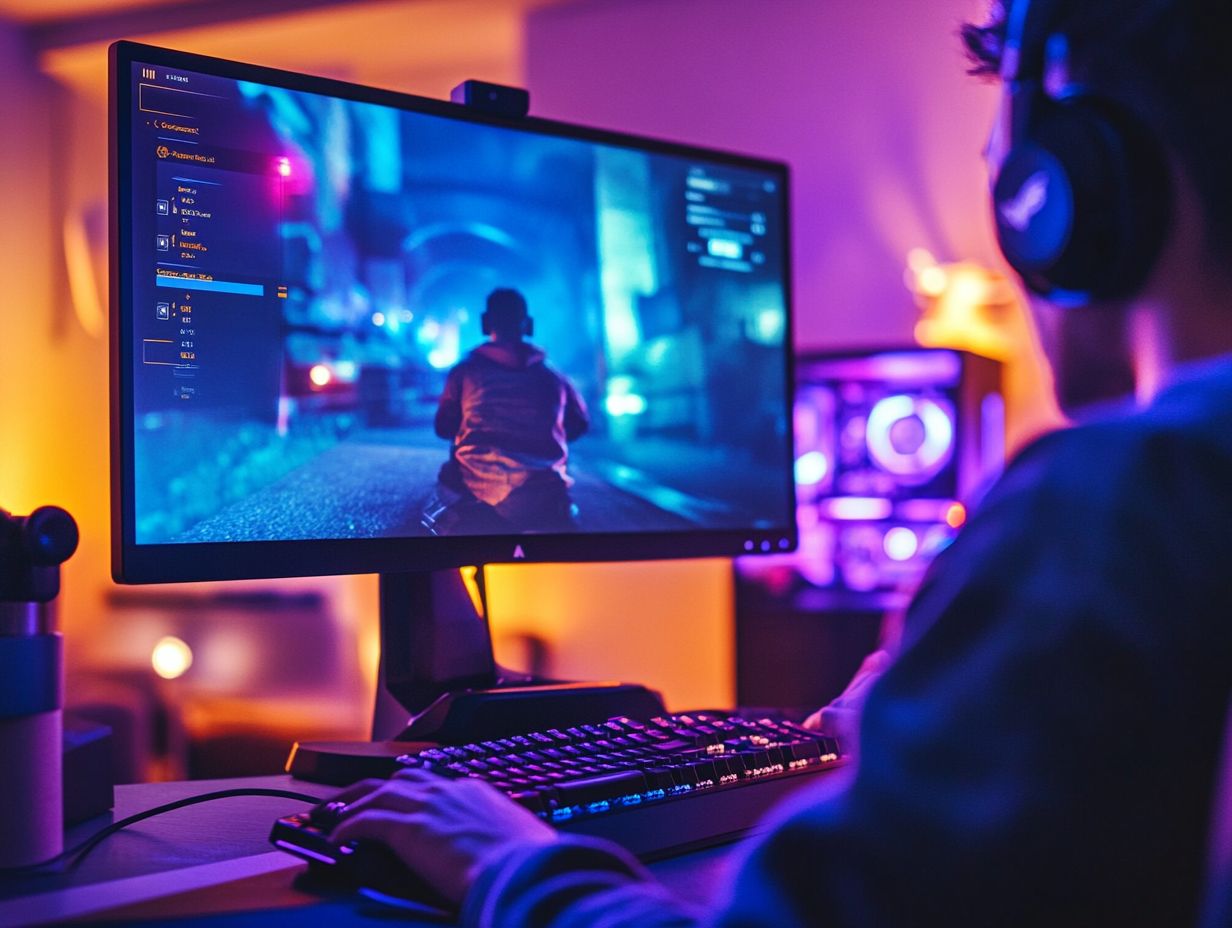
Adjust your resolution and refresh rate now! This boosts the visual quality and smoothness of your gameplay.
Properly calibrating color and brightness settings can significantly improve the overall look and feel of your games.
Consider input lag and response time when optimizing your gaming monitor settings for maximum responsiveness.
What are Gaming Monitor Settings?
Gaming monitor settings include a variety of adjustable parameters that can greatly affect your gaming experience. To enhance your setup further, consider optimizing your keyboard settings for gaming, which include refresh rates, color depth, brightness, contrast, and resolution.
Understanding these settings is vital for gamers who seek to optimize performance and gain a competitive edge in fast-paced environments.
Whether you’re using FreeSync or G-Sync, which help reduce motion blur, or tweaking color settings for more vibrant visuals, mastering your gaming monitor settings is crucial.
Additionally, features like game mode and eye care settings enhance gameplay and ensure comfort during long sessions.
Why Optimize Your Gaming Monitor Settings?
Want to enhance your gaming experience? Optimizing your monitor settings is the key!
A finely tuned gaming monitor delivers superior refresh rates, enhancing response time and providing clearer graphics.
This is particularly crucial for competitive gamers who depend on precision; embracing a Variable Refresh Rate can significantly reduce screen tearing, ensuring that fast-moving images appear fluid and seamless.
Techniques like enabling FreeSync or G-Sync can further enhance your gaming setup. It s imperative to grasp the advantages of adjusting your monitor settings.
Benefits of Optimizing Settings
Optimizing your gaming monitor settings offers a wealth of benefits, significantly elevating your gaming experience and enhancing comfort during extended sessions, but don’t forget to also learn how to optimize your gaming mouse settings for the best results.
Fine-tuning parameters like color accuracy unlocks richer, more vibrant graphics that align with the game developers’ true vision. This meticulous attention to detail can enhance your situational awareness, making it easier to spot enemies or essential items that could turn the tide of a match.
Incorporating features like blue light filters helps reduce potential fatigue, transforming marathon gaming sessions into a more sustainable endeavor.
By adjusting the monitor’s resolution to fit your preferences, you achieve sharper images that elevate your focus and precision.
Together, these adjustments ensure you re deeply immersed in your games while performing at your peak, free from the distractions of discomfort or visual imperfections.
Key Settings to Adjust for Optimal Gaming Experience
To achieve the optimal gaming experience, adjust several key settings on your gaming monitor.
Begin with the refresh rate higher rates deliver a smoother and more responsive gameplay experience, especially in fast-paced titles.
Don’t overlook the color settings; fine-tuning saturation and depth is essential to see vivid images without distortion.
Minimizing input lag and optimizing response time can significantly enhance your interactions with the game, enabling quicker reflexes and precise movements.
By understanding and adjusting these settings, you’ll elevate your gaming performance across various genres and platforms.
Resolution and Refresh Rate
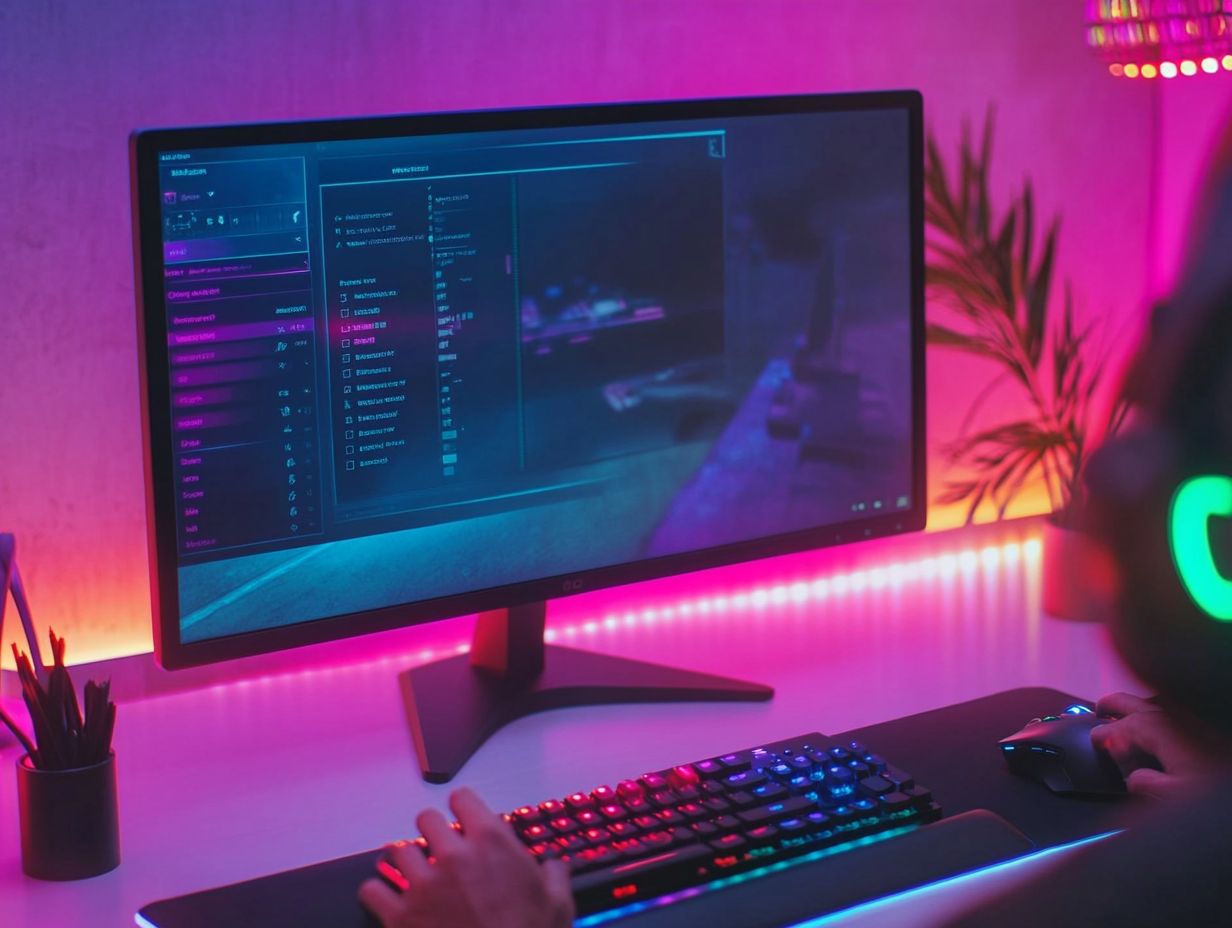
Your gaming monitor’s resolution and refresh rate shape your gaming experience. Higher resolution, like 4K, delivers detailed visuals. When paired with a high refresh rate, you get smoother gameplay, reducing motion blur.
Mastering these settings gives you an edge over opponents. Clear and fluid visuals can lead to better performance.
These settings complement each other. For example, a 144 Hz refresh rate at 1080p is often more responsive than 4K at 60 Hz in fast-paced games.
Adjust your settings based on the game type. Navigate to display settings in the game menu or graphic control panel to select your preferred options.
Modern monitors offer presets to optimize these parameters. Consider options like 1440p at 144 Hz for a balance of clarity and fluidity!
Color and Brightness
Adjusting color and brightness is vital for an immersive gaming experience. Proper calibration enhances the aesthetic appeal and helps distinguish in-game elements.
Games have unique color palettes, requiring tailored calibration. Built-in presets can help, but personal settings often yield better results.
A common mistake is assuming one setting works for all games. A colorimeter can ensure precise calibration and correct brightness levels.
Balancing these elements can enhance visual comfort and overall gameplay. This results in a captivating experience that keeps you engaged.
Input Lag and Response Time
Input lag and response time are key factors affecting your gaming monitor’s performance. High input lag causes frustrating delays, making quick reactions difficult.
A low response time refreshes your screen quickly, allowing for seamless interactions. Minimizing input lag and optimizing response time is essential for competitive gaming.
Understanding these metrics can determine victory or defeat, especially in competitive settings. Even slight delays can jeopardize your aim in fast-paced games.
To monitor these metrics, use:
- Latency testers
- In-game benchmarking options
Regularly update your graphics drivers and disable unnecessary background apps. Activate gaming modes on your monitor for enhanced responsiveness!
How to Optimize Your Gaming Monitor Settings
Optimizing your gaming monitor settings might seem challenging at first. But with a simple step-by-step guide on how to sync your monitor with your gaming PC, you can achieve peak performance tailored to your gaming preferences.
First, ensure your gaming monitor is set up and connected with high-quality cables like HDMI or DisplayPort.
Next, use software tools like the Nvidia Control Panel or AMD Radeon Software to explore advanced settings that will elevate your gaming experience.
Follow these steps to optimize your monitor for your favorite games and enjoy stunning visuals!
Step-by-Step Guide
Start with the physical setup. Connect your gaming monitor to your gaming PC using quality cables like HDMI or DisplayPort.
Now, check your monitor’s settings menu to adjust settings such as resolution, refresh rate, and color settings.
Pay special attention to the resolution; it impacts clarity and detail on-screen. Set the refresh rate to the highest value your monitor and graphics card support for smooth gameplay.
Adjust the color settings brightness, contrast, and saturation to enhance your visuals, making them vibrant and realistic. Experiment with each setting and note how they influence your experience.
This trial-and-error method helps you find the best configurations that match your unique gaming style.
Tips and Tricks
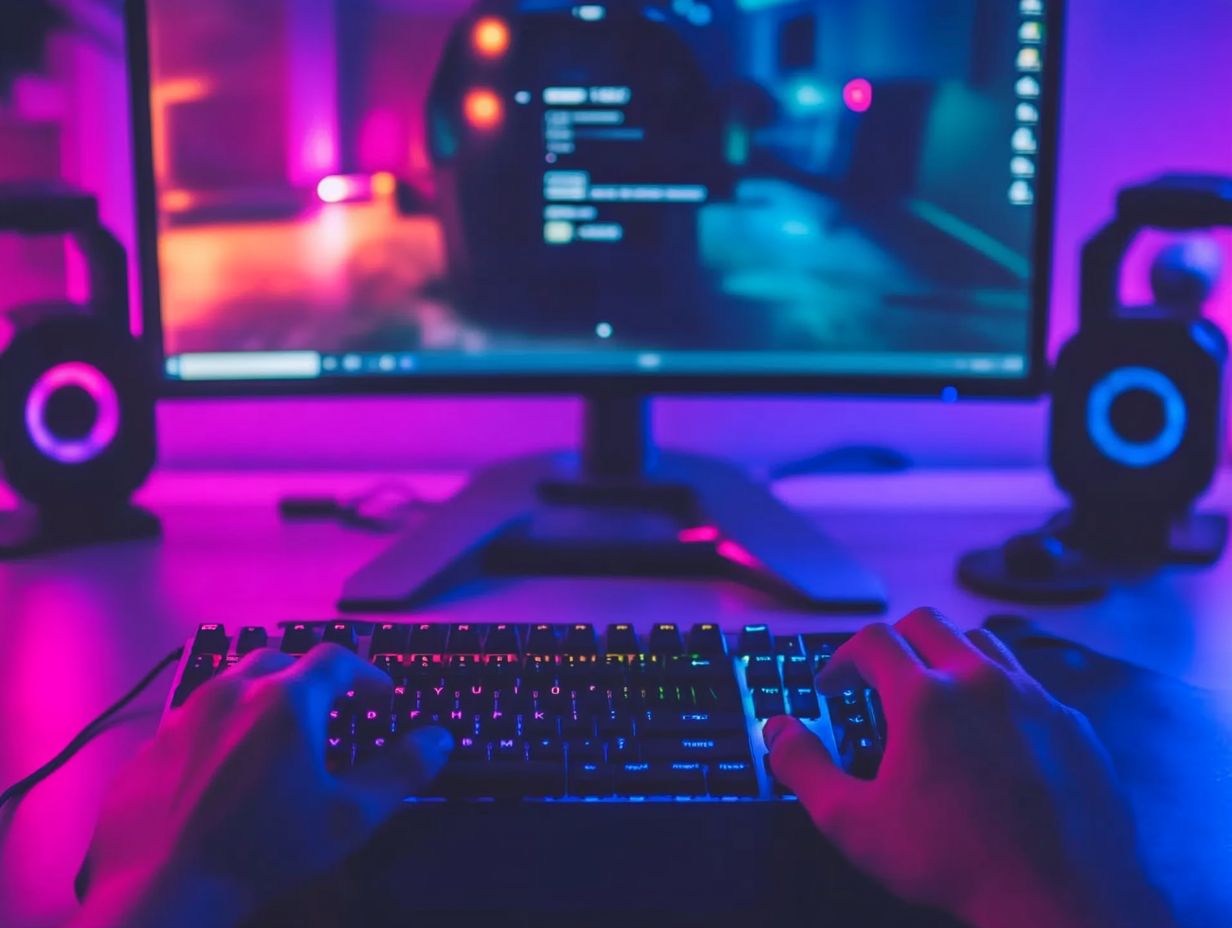
Beyond typical adjustments, numerous tips can significantly boost your gaming monitor’s performance. These tricks help create a custom gaming experience you ll love.
One effective approach is exploring custom resolution settings. This allows you to optimize performance based on your gaming style and hardware.
Using tools like frame rate counters and input lag testers gives you the power to pinpoint areas for improvement. Implementing these strategies paves the way for a more enjoyable and competitive gaming experience!
Customizing Settings for Different Games
Customizing settings for different games is key to optimizing performance. Understand each genre’s specific requirements to enhance your experience.
For example, racing games thrive with adjusted contrast and brightness to sharpen track details. In contrast, puzzle games benefit from softer colors to reduce eye strain during long sessions.
Adventure titles can utilize enhanced cinematic modes to enrich storytelling with deeper colors and sharper visuals, making the game world feel vibrant and alive.
By experimenting with response time and input lag settings, you can ensure your monitor performs perfectly for your favorite games.
Using Third-Party Software
Using third-party software can significantly elevate your gaming monitor settings, unlocking features that native options simply can’t match. Tools like the Nvidia Control Panel and AMD Radeon Software empower you to make precise adjustments, offering custom resolution setups, color calibration, and advanced refresh rate settings that will transform your gaming experience.
By getting to know these tools, you can tap into the full potential of your gaming monitor, ensuring every game runs at its absolute best.
Beyond these essential tweaks, third-party software allows you to personalize your visual experience further. For instance, enabling G-SYNC with the Nvidia Control Panel or FreeSync with AMD can effectively reduce screen tearing and stuttering, resulting in smoother gameplay.
Ready to enhance your gaming? Right-click on your desktop now and select the software you need! Within these programs, you’ll find various tabs to navigate through advanced settings, such as adjusting the display’s gamma or sharpening image quality.
By doing this, you create not just a visually stunning gaming environment but also a highly responsive one, tailored to your unique preferences.
Frequently Asked Questions
-
What are gaming monitor settings?
Gaming monitor settings refer to the various options and adjustments available on your monitor that can enhance your gaming experience. These settings include brightness, contrast, color, and refresh rate.
-
Why is it important to optimize my gaming monitor settings?
Optimizing your gaming monitor settings can greatly improve your gaming experience by providing better picture quality, increased visibility, and reduced eye strain. For tips on how to set up your gaming monitor for FPS games, you’ll also achieve smoother and more responsive gameplay.
-
What are some basic settings I should adjust for gaming?
Basic settings to adjust for gaming include brightness, contrast, and color settings. To enhance your experience, consider how to optimize your gaming setup with accessories, setting your brightness to a comfortable level and adjusting the contrast for clearer images and text. Feel free to tweak the color settings to achieve your desired color scheme.
-
How can I optimize my gaming monitor for specific games?
Many games have their own recommended display settings that can be found in the game’s options menu or through a quick internet search. These settings are tailored to provide the best visual experience for each game. For optimal results, consider using monitor calibration tips for gamers, as some gaming monitors even have ‘game modes’ that optimize settings automatically.
-
What is the ideal refresh rate for gaming?
The ideal refresh rate depends on the type of game and your preferences. Most gaming monitors have a 120Hz or 144Hz refresh rate, suitable for fast-paced games. However, competitive gamers may prefer a higher refresh rate of 240Hz for an even smoother gameplay experience.
-
Is it necessary to calibrate my gaming monitor?
While it s not strictly necessary, calibrating your gaming monitor can significantly improve color accuracy and overall picture quality. You can purchase calibration tools or use online resources to help with the process. However, if you re not experiencing any issues with your current settings, calibration may not be needed.

